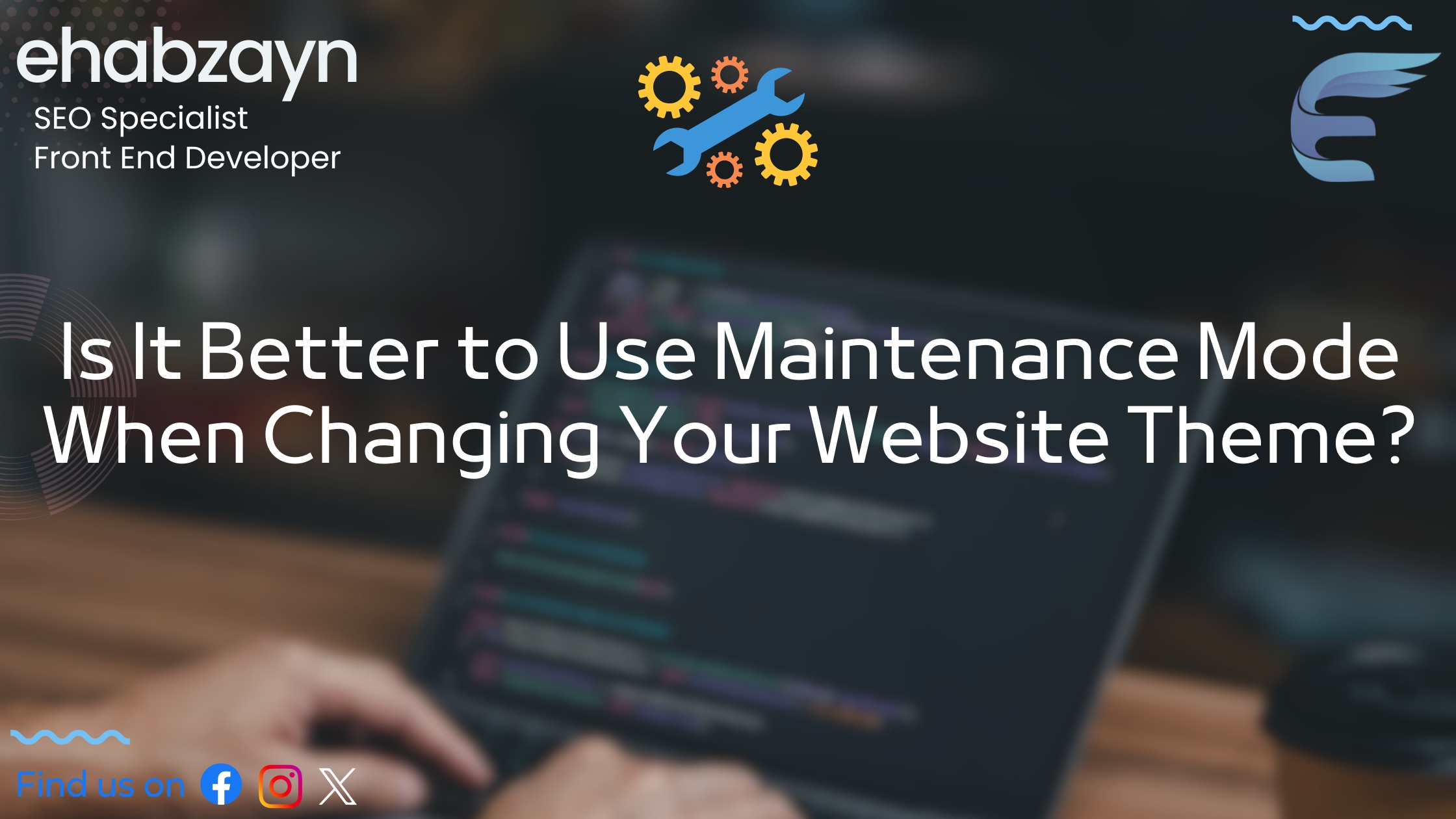Call us now:
Is It Better to Use Maintenance Mode When Changing Your Website Theme?
Is It Better to Use Maintenance Mode When Changing Your Website Theme?

When you’re making significant changes to your website, especially switching to a new theme, one of the first questions that pops up is whether or not to put your site in maintenance mode. It might seem like a small decision, but it can have a big impact on the user experience, SEO, and even the overall performance of your site. So, let me break it down for you, sharing why I believe it can make a big difference and what you should consider before deciding.
Related : How Spam Finds your website?: Protecting Your Website from Spam Comments
What is Maintenance Mode?
In simple terms, maintenance mode is a feature that temporarily takes your website offline. Visitors will see a friendly message telling them the site is undergoing updates and will be back soon. During this time, they won’t be able to access your site, but at least they’ll know you’re working on it.
Why I Think Maintenance Mode is a Good Idea:
- Minimize User Experience Disruptions: One of the main reasons I always use maintenance mode during a theme change is to avoid a messy site experience for users. Imagine your site with broken links, missing images, or odd formatting. It’s frustrating for visitors and doesn’t reflect well on your brand. With maintenance mode, users know you’re improving things and won’t run into incomplete or glitchy pages.
- Protect SEO: Search engines like Google are always crawling your site and indexing your pages. If your website’s theme is being changed and your pages aren’t looking their best, it could affect your SEO rankings. Broken pages or poor layout could lead to lower rankings. By enabling maintenance mode, you ensure that search engines don’t crawl incomplete or broken pages, thus protecting your SEO performance.
- Prevent Security Risks: During a theme change, especially if you’re tweaking code or making backend modifications, your website might be more vulnerable to security risks. It’s not always easy to spot potential issues right away. By putting your site in maintenance mode, you can avoid any unwanted access or attacks during this period.
- Transparency for Your Visitors: No one likes to land on a broken website. With maintenance mode, you can keep your visitors informed. A simple message explaining that you’re working on improving the site can go a long way in maintaining trust. People appreciate knowing what’s going on rather than being left in the dark.
Why You Might Skip Maintenance Mode:
- Minor Updates That Don’t Affect Much: If your theme change is relatively small and won’t affect the core structure or layout of your site too much, you might be able to skip maintenance mode. For instance, if the new theme looks similar to the old one and doesn’t cause issues for your visitors, you could go ahead with the changes without any major interruptions.
- Low Traffic Sites: If your website doesn’t get much traffic, the impact of keeping it offline for a short time might not be as significant. However, even for low-traffic sites, I still recommend using maintenance mode just to avoid any potential issues or confusion.
- Gradual Updates: Some people prefer to implement updates step by step instead of making all the changes at once. If you’re doing a gradual update, it might not be necessary to enable maintenance mode. But keep in mind, this requires careful planning and testing to make sure the site functions properly while changes are being made.
Best Practices for Maintenance Mode:
If you decide to go ahead and enable maintenance mode, here are some tips to make it as effective as possible:
- Customize Your Maintenance Page: Rather than using a default maintenance page, I suggest customizing it to fit your brand. Add a message explaining why the site is down and, if possible, include an estimated return time. This helps keep your audience informed and reassured.
- Test Changes on a Staging Site: If possible, I always recommend testing your theme changes on a staging site before applying them to the live version. This way, you can make sure everything works as expected without impacting your visitors.
- Notify Your Audience: Let your regular visitors know about the upcoming maintenance in advance. You can use email newsletters or social media posts to inform them. This will help avoid any confusion and show that you’re working to improve their experience.
The Impact of Maintenance Mode on SEO:
When it comes to SEO, the way you manage your site during a theme change can make all the difference. Here’s why I always advise using maintenance mode when making major updates:
- Protect Crawling and Indexing: Search engines crawl and index your website regularly. If your site is under construction and pages are missing or broken, this could hurt your rankings. Maintenance mode stops search engines from crawling incomplete pages, ensuring that they index only the pages that are properly updated.
- Prevent Negative User Experience Signals: Google cares about user experience. If users land on a broken or half-finished website, they might bounce quickly, which signals to Google that your site isn’t providing value. Maintenance mode helps avoid these issues and keeps your site’s reputation intact.
- Avoid Duplicate Content Issues: Sometimes, parts of your site might show outdated content during a theme change. If this happens, it can confuse search engines, leading to duplicate content problems. With maintenance mode, you prevent this by only displaying the maintenance page, keeping everything clear and organized for search engines.
- Temporary Downtime is Better Than No Message: If your site is down without any maintenance message, search engines might interpret this as a site that’s unreliable. But with a maintenance message in place, you signal to both search engines and users that the downtime is temporary and part of necessary improvements, which minimizes any potential negative SEO impact.
Conclusion:
In the end, using maintenance mode during a theme change is almost always the best option. It helps protect your SEO, keeps users informed, and ensures that your website transition is as smooth as possible. Whether you’re making major updates or smaller tweaks, maintenance mode can prevent issues that could harm your site’s performance, user experience, and rankings. If you’re unsure, it’s always better to take a little extra time to plan and implement maintenance mode properly. Trust me, it’s worth it in the long run.
